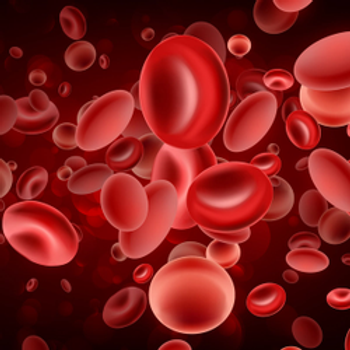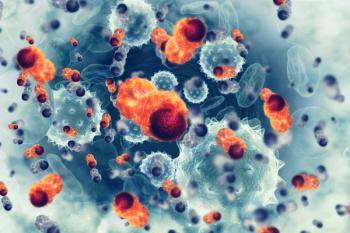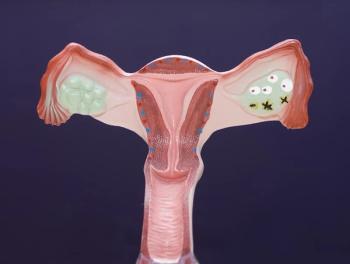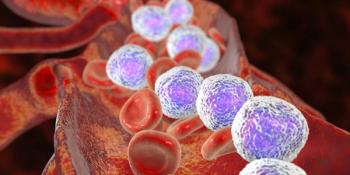
- ONCOLOGY Vol 16 No 3
- Volume 16
- Issue 3
Rubitecan Active in Hematologic Malignancies
Data from a phase II clinical study demonstrated that the investigational oral agent rubitecan (9-nitrocamptothecin, or 9NC) is active in both chronic myelomonocytic leukemia (CMML) and myelodysplastic syndromes (MDS). These data were presented at the 43rd annual meeting of the American Society of Hematology (ASH) in Orlando.
Data from a phase II clinical study demonstrated thatthe investigational oral agent rubitecan (9-nitrocamptothecin, or 9NC) is activein both chronic myelomonocytic leukemia (CMML) and myelodysplastic syndromes(MDS). These data were presented at the 43rd annual meeting of the AmericanSociety of Hematology (ASH) in Orlando.
Trial Details
The trial was conducted in 35 evaluable patients who had previously receiveda minimum of one prior therapy, and who had been diagnosed with either CMML (n =23) or MDS (n = 12). The median age of the study population was 69 years (range:29 to 81 years). The objective response rate was 28%four complete responsesand six partial responses. In addition, hematologic improvement was observed in14%, leading to an overall response rate of 42%.
The most common side effects were diarrhea (in 20% of patients) andnausea/vomiting (in 9% of patients). These toxicities usually improved duringperiods when chemotherapy was suspended.
"We conclude that 9-NC has activity in CMML and MDS," said Dr.Hagop Kantarjian, an oncologist at the M. D. Anderson Cancer Center in Houstonand lead investigator of the study. "A lower dose and a hiatus betweencycles may improve tolerance. Further studies in these diseases areongoing."
Articles in this issue
almost 24 years ago
Single-Agent Rituximab in Early-Stage Chronic Lymphocytic Leukemiaalmost 24 years ago
Recruitment for Trial of Adjuvant Trastuzumab Under Wayalmost 24 years ago
Rituximab in the Treatment of Acquired Factor VIII Inhibitorsalmost 24 years ago
Support for New Medicare Pay Formulaalmost 24 years ago
Irinotecan-Containing Regimen Improves Survival in Small-Cell Lung CancerNewsletter
Stay up to date on recent advances in the multidisciplinary approach to cancer.


















































































